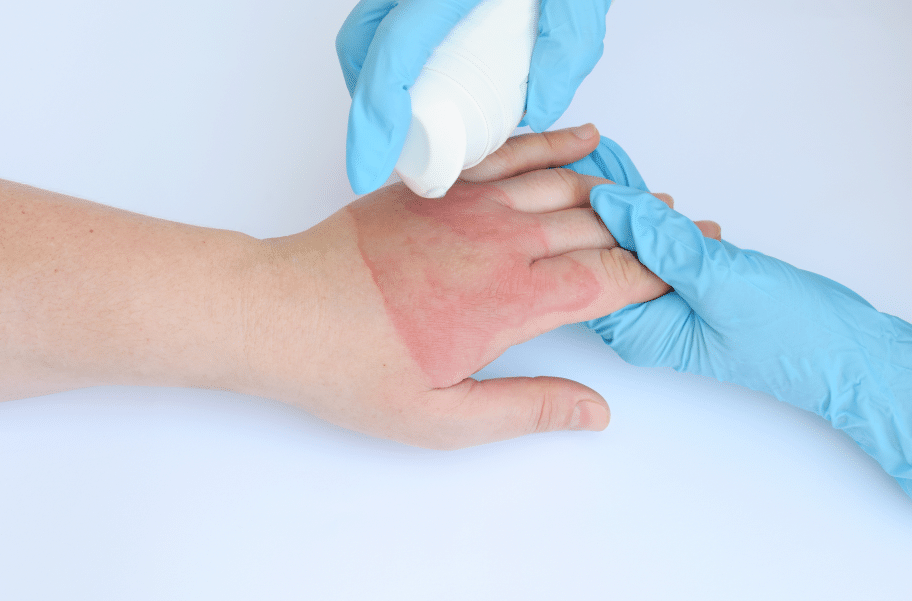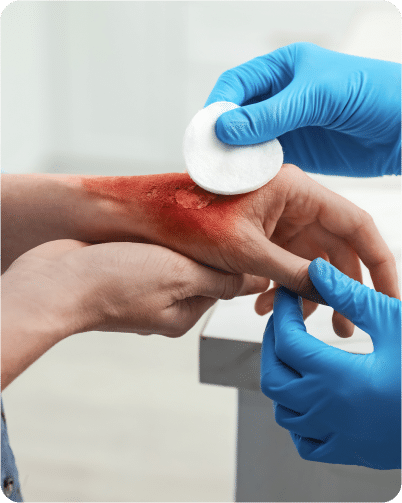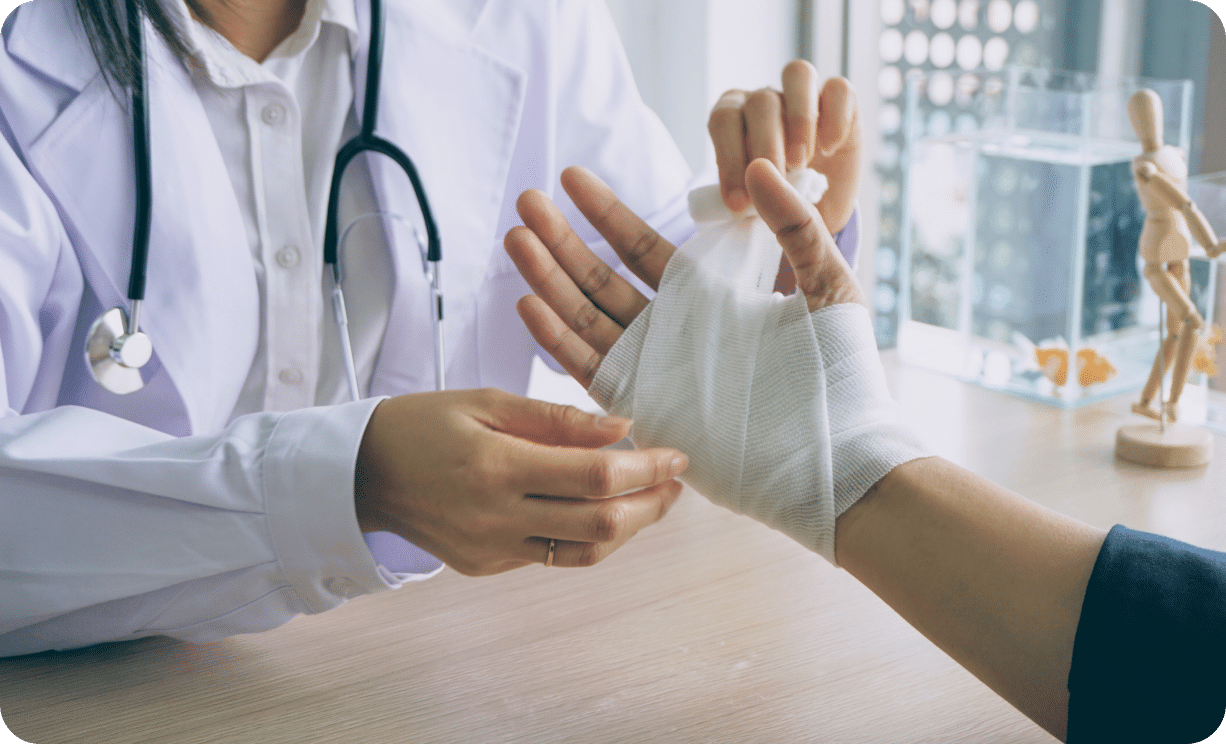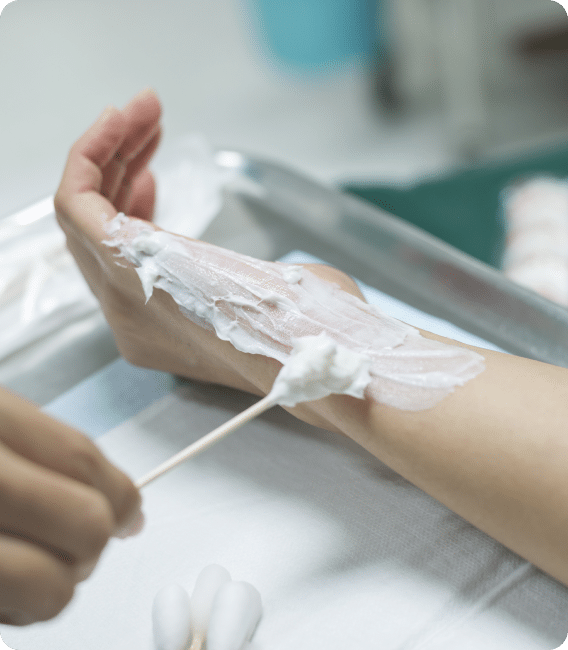
Thermal Burns
Understanding Thermal Burns and Their Treatment
What are Thermal Burns?
Thermal burns occur when skin or other tissues are damaged by exposure to heat sources such as fire, hot liquids, steam, or hot objects. These burns can vary in severity, from minor injuries to severe, life-threatening conditions. Effective treatment and management of thermal burns are essential to promote healing, prevent complications, and minimize scarring.
Types of Thermal Burns
- Superficial (First-Degree) Burns: These affect only the outer layer of the skin (epidermis) and typically cause redness, pain, and minor swelling. Sunburns are a common example of superficial burns.
- Partial-Thickness (Second-Degree) Burns: These affect the outer layer of skin (epidermis) and part of the underlying layer (dermis). They are characterized by blistering, severe pain, swelling, and redness.
- Full-Thickness (Third-Degree) Burns: These extend through all layers of the skin, damaging underlying tissues such as muscles, tendons, and bones. Full-thickness burns may appear white, black, brown, or charred and may be relatively painless due to nerve damage.
- Fourth-Degree Burns: These are the most severe type of burn, extending through the skin and underlying tissues to damage muscle, bone, or internal organs. Fourth-degree burns are life-threatening and require immediate medical attention.
Treatment of Thermal Burns
- Cooling: Immediate cooling of the burn with cool (not cold) water to reduce pain and prevent further tissue damage.
- Pain Management: Administration of pain medications to alleviate discomfort associated with the burn injury.
- Wound Care: Cleaning and dressing the burn wound to prevent infection and promote healing.
- Fluid Replacement: Intravenous fluids may be administered to replace fluids lost due to burns and prevent dehydration.
- Antibiotics: Antibiotic ointments or systemic antibiotics may be prescribed to prevent or treat infection in severe burns.
- Surgical Interventions: Surgical procedures such as skin grafting or debridement may be necessary for severe burns to promote wound closure and tissue repair.

When to Seek Medical Attention?

Thermal burns should be assessed by a healthcare professional if they are severe, involve critical areas of the body, show signs of infection or complications, or if there are concerns about healing. Early medical intervention can help prevent complications, promote healing, and improve outcomes.
- Severe Burns: Burns that are deep, extensive, or involve critical areas of the body, such as the face, hands, feet, groin, or major joints, should be evaluated by a healthcare professional as soon as possible.
- Difficulty Breathing: If the burn occurred in or around the airway, or if there is any difficulty breathing, coughing, or swallowing, seek immediate medical attention, as this may indicate inhalation injury or airway compromise.
- Electrical Burns: Burns caused by electricity, such as lightning strikes or electrical accidents, should be assessed by a healthcare provider, even if they appear minor on the surface, as they can cause internal damage.
- Signs of Infection: If the burn becomes red, swollen, warm, or begins to ooze pus, it may indicate infection and should be assessed by a healthcare provider. Fever: A fever following a burn injury may indicate infection or systemic inflammation and should be evaluated by a healthcare professional.
- Pain Management: If over-the-counter pain medications are not providing adequate relief, or if the pain worsens over time, it's advisable to seek medical attention for further evaluation and management.
- Concerns about Healing: If the burn does not appear to be healing or if there are any concerns about the progression of the injury, it's important to consult a healthcare provider for assessment and guidance.
- History of Medical Conditions: Individuals with pre-existing medical conditions, such as diabetes or compromised immune systems, may be at higher risk of complications from burns and should seek medical attention promptly.
- History of Complications: If you have a history of complications related to diabetic foot ulcers, such as peripheral arterial disease, neuropathy, or previous amputations, it's essential to maintain regular follow-up with your healthcare provider and seek prompt attention for any new or worsening symptoms.
Our Approach
To Thermal Burns Care
At MetaCure we prioritize the well-being and comfort of our patients. Our experienced team of healthcare professionals is dedicated to providing prompt, comprehensive, and compassionate care for thermal burns of all types and severities.

Our Burns Treatments
The specific treatment plan will depend on the severity and type of thermal burn, as well as individual patient factors. Prompt and appropriate medical care is essential for optimal outcomes in burn management.
